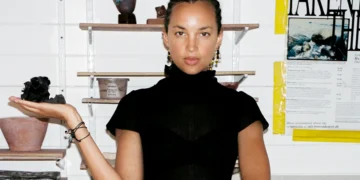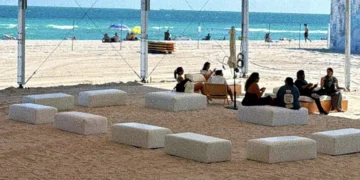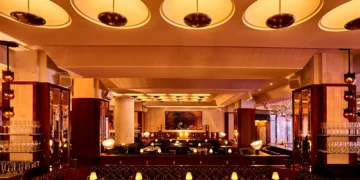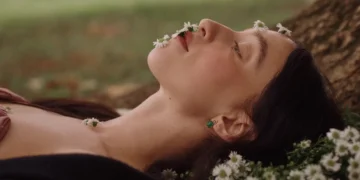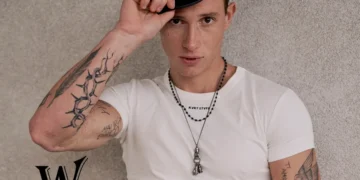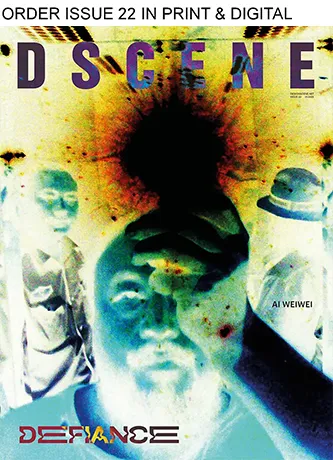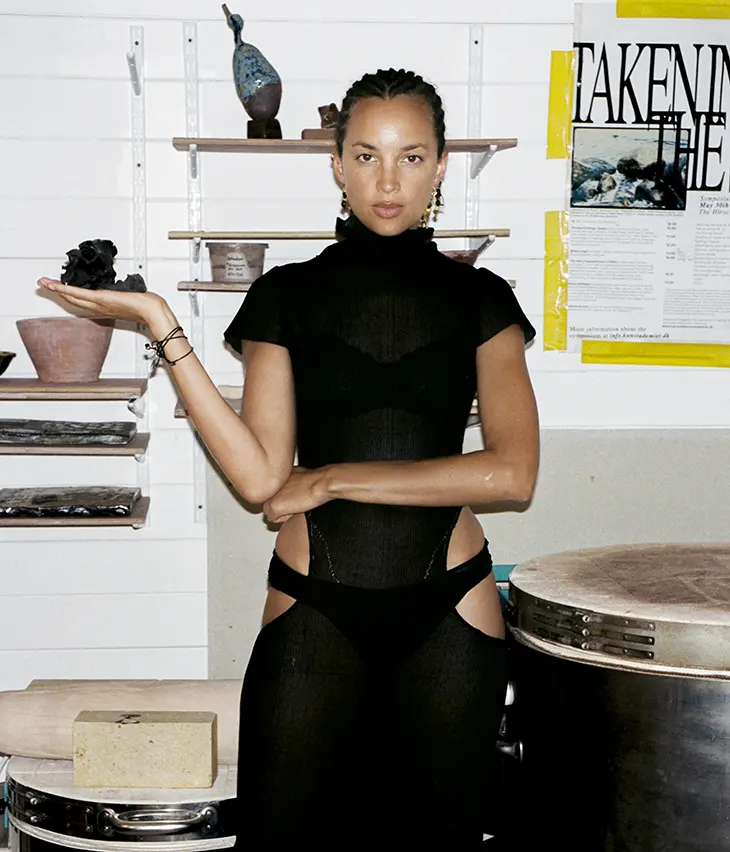
Phoebe Collings-James has built a practice that refuses to separate clay from politics, care, and community. In 2019, she founded MUDBELLY, a ceramics school in London dedicated to centering Black, queer feminist values while dismantling systemic barriers within the arts. For Collings-James, clay is a site of agency, resistance, and intimacy, a way to create spaces of belonging for those often excluded from traditional art institutions.
INTERVIEWS
In conversation with DSCENE Magazine editor Katarina Doric, Collings-James reflects on the journey of MUDBELLY and how it has evolved into a radical space of care. From addressing structural inequalities in access to ceramics, to witnessing the transformative bonds formed in the studio, her work reimagines what education in the arts can look like. She also opens up about how teaching has deepened her relationship with clay, her navigation of both the fashion and art worlds, and her vision for sustaining community-driven practices.
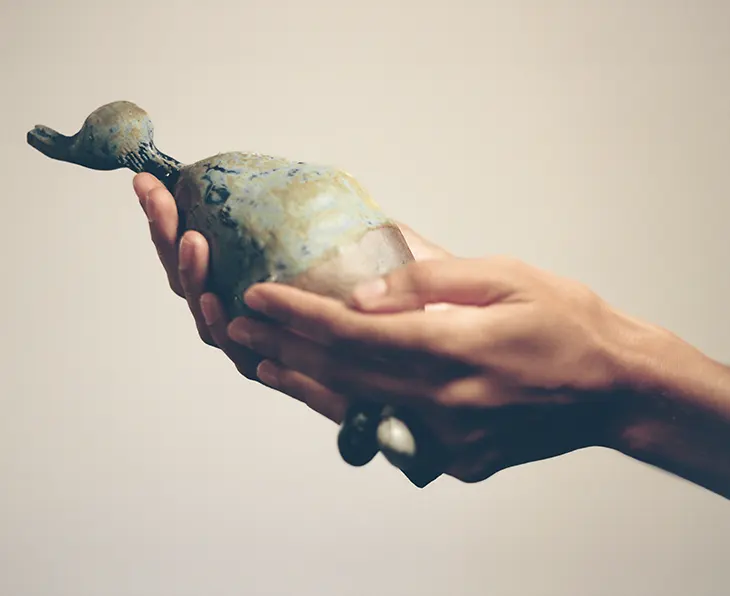
You founded MUDBELLY in 2019 as a personal research project. Can you take us back to that starting point and share what inspired you to merge ceramics with Black, queer feminist values? – Mudbelly emerged from my personal practice, which is deeply concerned with agency, anti-colonial thinking, desire, and over-and-out bodily terrains. When approaching pottery and teaching, these ideas came with me, and it was important that Black feminist and queer politics were present. I knew it was important, when creating a space for Black people learning together, that it be intentional about where it stood politically, as organizing around Blackness alone without a shared sense of the kind of world we want to make together is not what I believe in.
When creating a space for Black people learning together, it was essential that Black feminist and queer politics were present.
What does “a radical space of care” mean to you in the context of MUDBELLY, and how does that shape the experience for your students? – In this context, it is about listening to what we all need from the space, students and teachers alike, while being open to critique and change. It also means being specifically aware of what may be needed for different people to be in the space, whether that is assistance with childcare or transport, or access needs within the studio. It is important to factor that in, and this has to remain flexible to what our resources can support. It often starts with addressing these things in the first place and can sometimes be as simple as changing the times of a class.
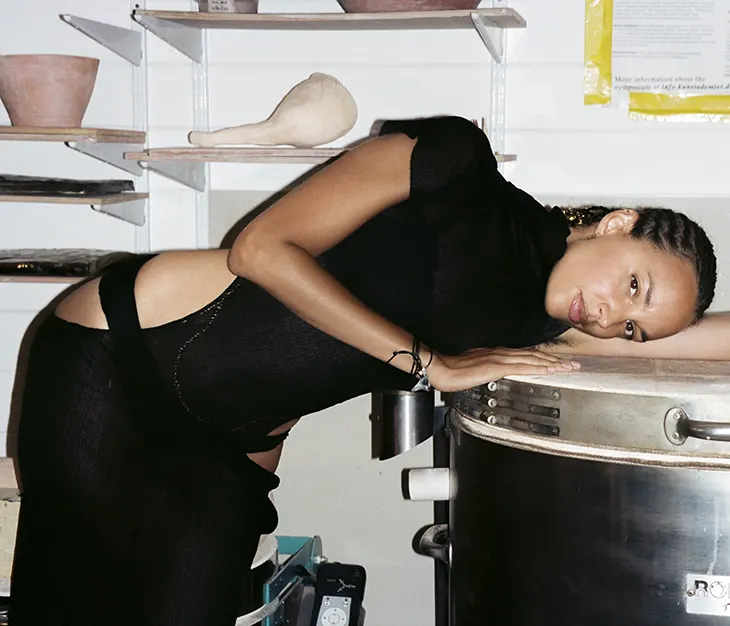
Your model dismantles systemic barriers to access in the arts. What are some of the most common challenges Black people in London face when it comes to engaging with ceramics? – Economic disparity is the primary reason, as we are more likely to be on lower incomes, and ceramics is an unavoidably expensive practice. Then there is the culture created in white-led studios, where people often don’t feel welcome because of direct experiences of racism and a lack of intention on the studio’s part. The studios advertise in a globalised, gentrifier aesthetic that is alienating to much of the community where these studios appear. I don’t think they have the political awareness or care to consider what they might need to do to make it welcoming to Black people, or even see it as a problem to open in African and Caribbean neighborhoods and have none of those communities inside. Lastly, I would say there is also an issue with the curriculum and the lack of promotion of Black clay traditions or recognition of our contributions to the field. I should say too that I believe education should be free, and not so long ago in the UK you could access clay courses in schools and adult education colleges.
Can you share a moment or story from MUDBELLY’s journey that illustrates the transformative power of community in the studio? – Probably knowing how many friendships have formed during the classes and hearing the feedback about the experience of the collective space. While the reasons above may have contributed to the need for the space, new reasons come to the surface once inside, such as the fact that it is inspiring and uplifting to study alongside other Black people when you are living in a majority white country.
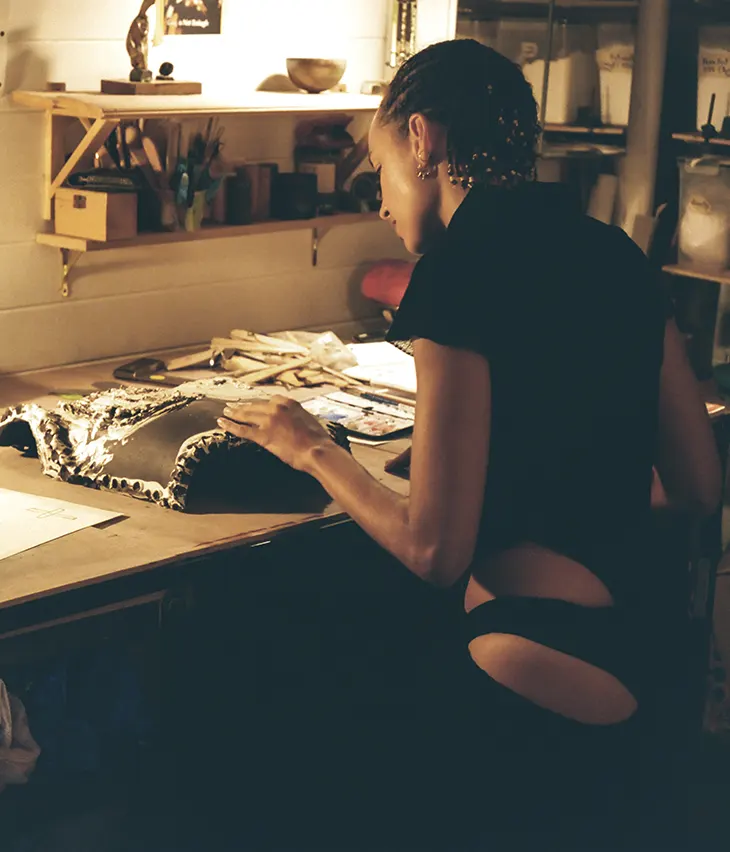
How has running MUDBELLY influenced your own sculptural and artistic practice? – I think being in the teacher/organizing role, I come to my practice with a more enquisitive eye. It has also deepened my relationship with clay as a medium – I love it even more.
The vision is for this space to continue to provide free education and discourse around clay as a medium of production and expression.
Ceramics can be both deeply physical and meditative. How do you see the therapeutic and spiritual benefits of clay playing out in your students’ experiences? – I’s often a space where students can be at ease, all the while working through the challenges, successes and collapses of learning with clay. I think opening up that part of yourself in a space that you feel comfortable in, is spiritually therapeutic.
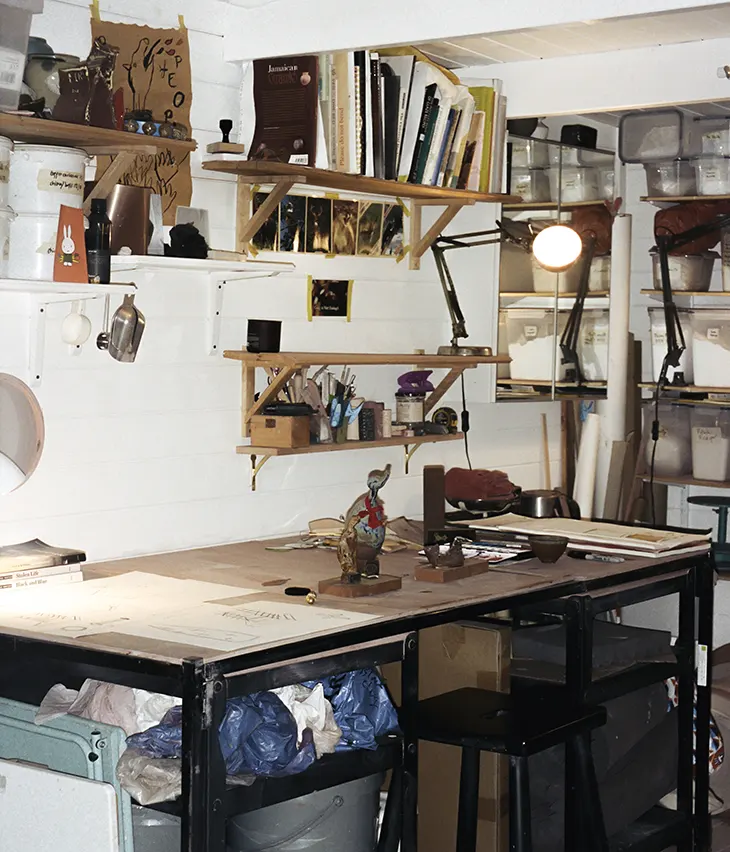
Before MUDBELLY, you were a fashion model. How has your time in the fashion world informed the way you navigate the art space today? -Before fashion, I was an artist, so all of it runs in tandem. The fashion world and the art world are very alike in their business models. In both spheres, I have to be strategic, keeping my heart connected to the creativity, joy, and interest while also navigating the sickness of capitalism raging through both, which will suck all life out of it.
What does sustainability look like for a community-rooted, values-driven space like MUDBELLY? -It looks like having a funding model that is truly supportive, where we can provide free education while also ensuring that teachers and administrators are paid for their work.
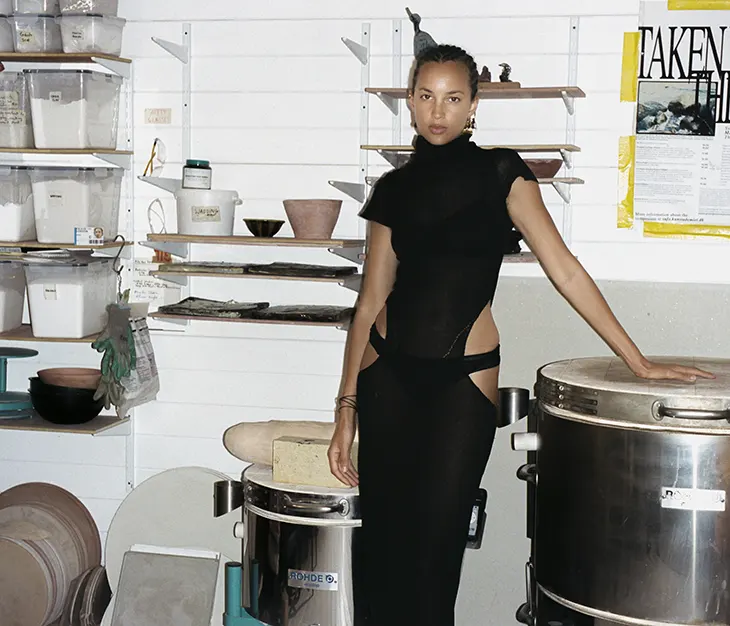
What’s your vision for MUDBELLY five years from now, both in London and internationally? – The vision is for this space to continue to be one among many, providing free education and discourse around clay as a medium of production and expression, while also having the opportunity to collaborate with spaces that share similar ideas, like Ban Project in Senegal.
Buy a bag of clay, get started and be playful.
If you could send one message to a young Black artist curious about ceramics but unsure where to start, what would it be? – Buy a bag of clay, get started and be playful. Read books, look on YouTube. Try not to put too much pressure on the outcome.
Phoebe is wearing Dress Callon, Shoes Grenson and Jewelry Dinosaur Designs.
